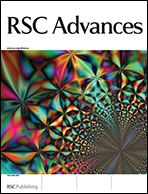Formation and characterization of VUV photolytically-induced (NH2)(NH3)n aggregates, 0 ≤ n ≤ 3
Abstract
The formation of amidogen radical may be an important precursor toward the formation of prebiotic molecules on the surface of ice grains in interstellar clouds. Many laboratory experiments aimed at characterizing the photolysis of


 Please wait while we load your content...
Please wait while we load your content...